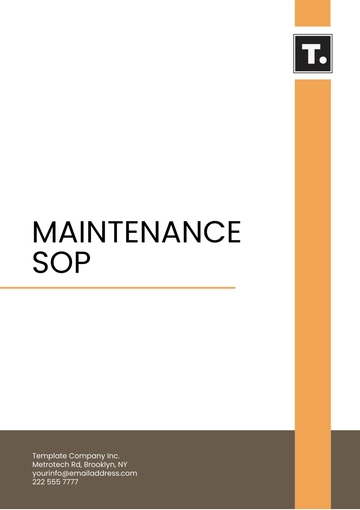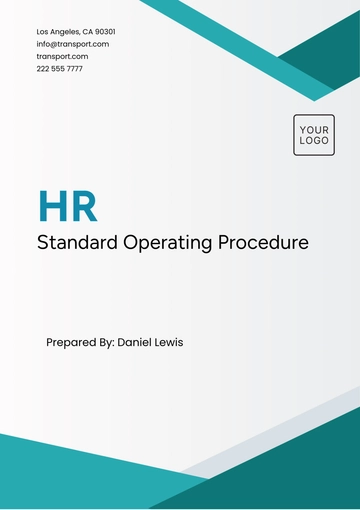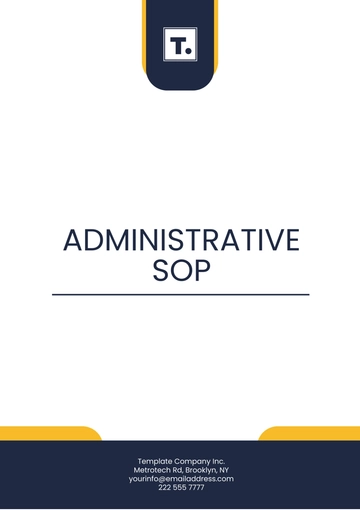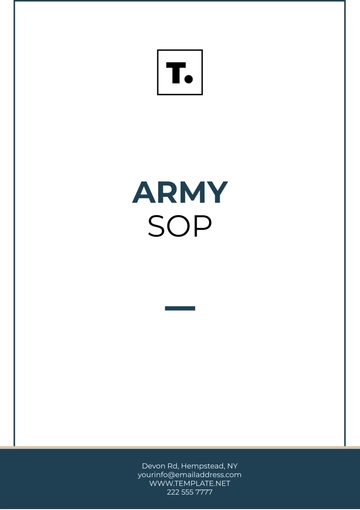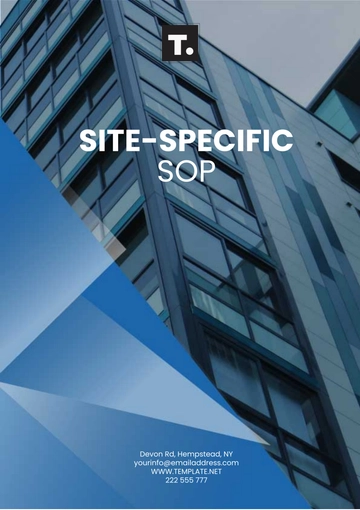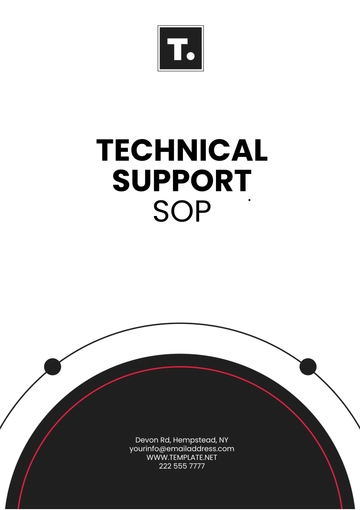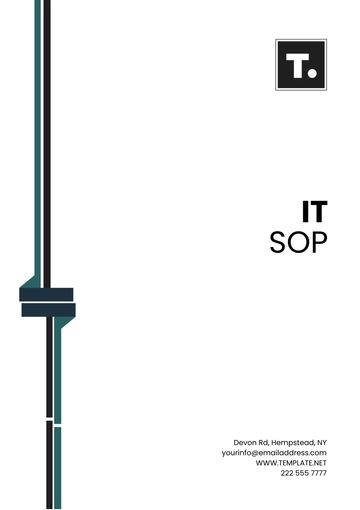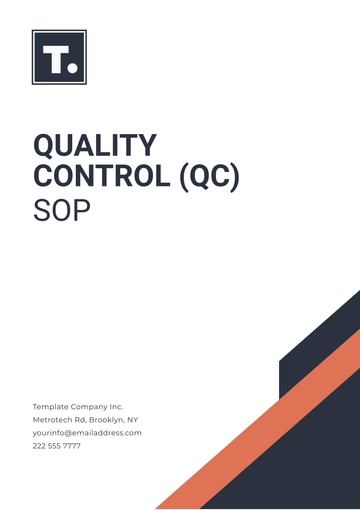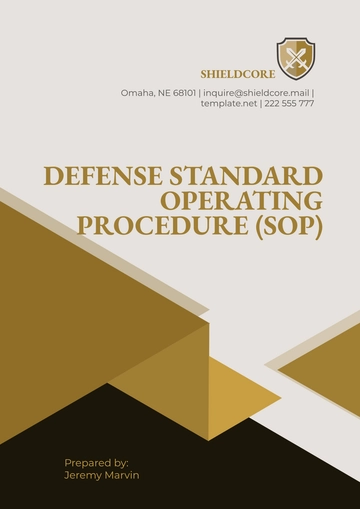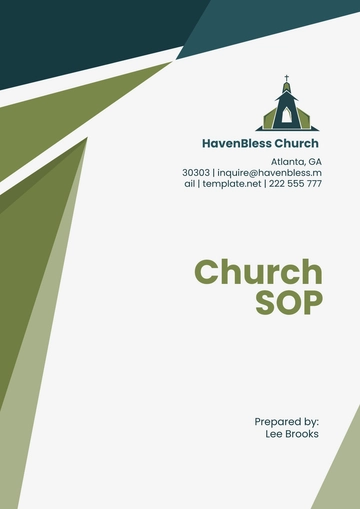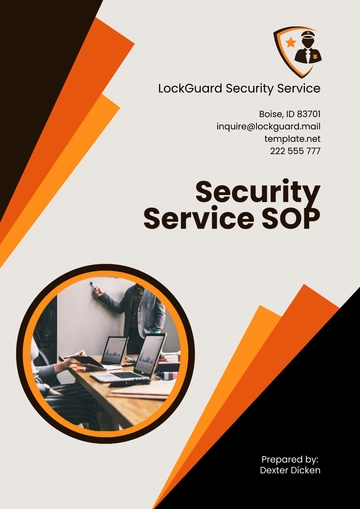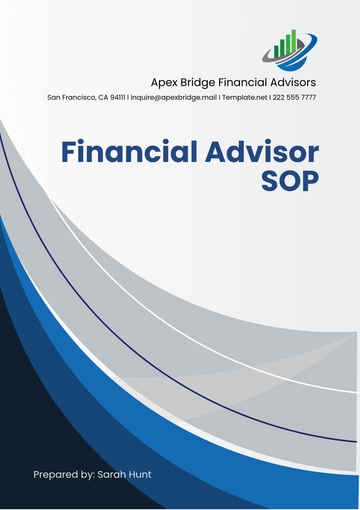Free Simple??Church Administrative SOP
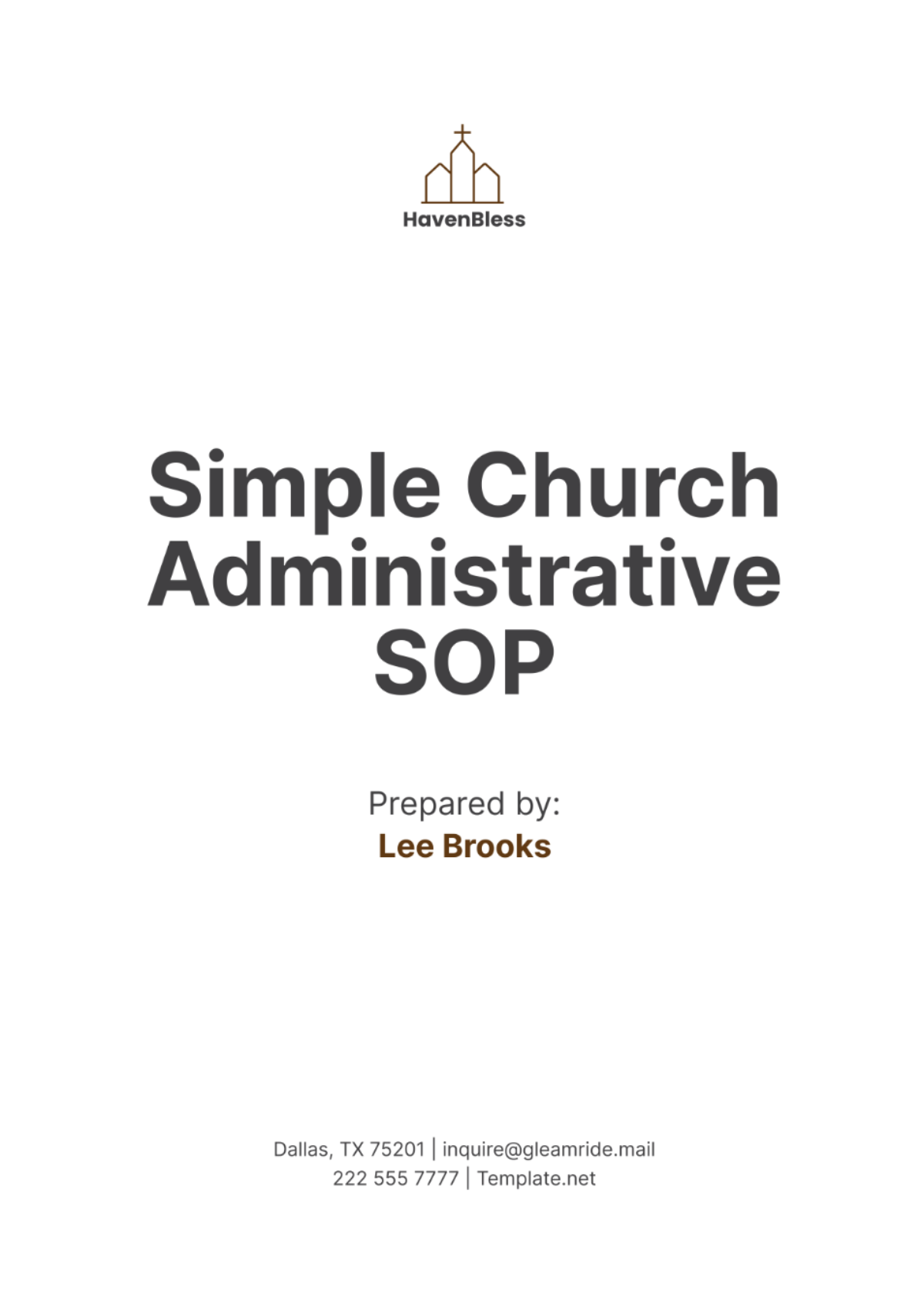
I. Introduction
A. Purpose of the SOP
Overview of Objectives
This Standard Operating Procedure (SOP) is designed to standardize administrative practices across [Your Company Name] to promote efficiency and consistency. By providing clear guidelines, the SOP helps streamline daily operations, ensuring that all administrative tasks are executed uniformly. The document serves as a reference for staff and volunteers, enabling them to understand and adhere to best practices. Ultimately, the SOP supports the church’s mission by enhancing operational effectiveness and reducing administrative errors.
Importance of Consistency
Consistent administrative practices are critical for maintaining organizational stability and transparency. By adhering to established procedures, staff and volunteers can avoid discrepancies and ensure that all activities align with the church’s goals. Consistency also fosters trust and reliability among congregation members and stakeholders. This SOP provides a framework for uniformity, which is essential for effective governance and operational management.
Scope and Applicability
This SOP encompasses all administrative functions within [Your Company Name], including financial management, record-keeping, scheduling, and communication. It is applicable to all church staff, including paid employees and volunteers, who are involved in administrative tasks. The procedures outlined are designed to be comprehensive yet adaptable to meet the evolving needs of the church. Adherence to this SOP ensures that all administrative activities are conducted in a coordinated and effective manner.
B. Definition of Terms
Key Terms and Concepts
SOP: A standardized document that outlines specific procedures for performing tasks to ensure consistency and compliance.
Budget: A financial plan that outlines anticipated revenues and expenses for a specified period, used to manage and control church finances.
Records: Documentation that includes financial statements, membership details, meeting minutes, and correspondence critical for church operations.
Acronyms and Abbreviations
FTE: Full-Time Equivalent, a measure used to quantify the workload of a full-time employee or the equivalent part-time hours.
PR: Public Relations, the practice of managing and disseminating information from the church to the public to maintain a positive image.
DBS: Data Backup System, a system used to regularly save copies of important data to prevent loss and ensure data recovery.
II. Organizational Structure
A. Church Leadership
Roles and Responsibilities
Senior Pastor: Provides visionary leadership and spiritual guidance, oversees all church activities, and ensures that the church’s mission and goals are met. They are responsible for setting overall strategic direction and representing the church in the community.
Associate Pastors: Support the Senior Pastor in various ministry areas, lead specific programs or services, and provide pastoral care to members. Their responsibilities also include assisting with administrative tasks and executing church strategies as directed.
Contact Information
Senior Pastor: [Name], who can be reached at [Email] or [Phone Number], is the primary contact for spiritual guidance and high-level decision-making.
Associate Pastors: [Names], available at [Emails] and [Phone Numbers], are the key contacts for specific ministry areas and support functions.
B. Administrative Team
Roles and Responsibilities
Church Administrator: Manages day-to-day operations, coordinates with various departments, and ensures that administrative procedures are followed. They oversee financial management, record-keeping, and ensure compliance with church policies.
Office Manager: Handles the coordination of office activities, including scheduling, communication, and record maintenance. They support the Church Administrator by managing office resources and assisting with various administrative tasks.
Reporting Lines
The Church Administrator reports directly to the Senior Pastor and collaborates with other church leaders to implement operational strategies.
The Office Manager reports to the Church Administrator and works closely with staff members to support administrative functions and ensure smooth operations.
III. Administrative Procedures
A. Financial Management
Budgeting
Annual Budget Preparation
Each fiscal year, the Church Administrator, in collaboration with department heads, will draft a comprehensive budget that reflects the church’s financial goals and operational needs. This draft is reviewed and revised based on input from the Finance Committee to ensure alignment with the church’s strategic priorities. Once finalized, the budget is presented to the church board for approval. The approved budget serves as a financial roadmap for the year, guiding spending and resource allocation.
Budget Approval Process
After the draft budget is prepared, it is reviewed by the Finance Committee to ensure accuracy and alignment with church objectives. The final version is then presented to the church board for approval at the annual meeting. The congregation is informed of the approved budget, providing transparency and accountability. Any adjustments to the budget during the year must be approved through a formal amendment process.
Accounting
Record-Keeping
All financial transactions, including income, expenses, and donations, must be accurately recorded in the church’s accounting system. Detailed records are maintained for transparency and accountability, including receipts, invoices, and bank statements. The Church Administrator is responsible for ensuring that all records are up-to-date and that financial documentation is securely stored. Regular audits are conducted to verify the accuracy of financial records.
Expense Reimbursements
Staff and volunteers must submit reimbursement requests with detailed receipts and documentation within 30 days of incurring expenses. The Church Administrator reviews and approves these requests to ensure they align with the church’s financial policies. Approved reimbursements are processed promptly, and funds are disbursed through the church’s accounting system. All reimbursement requests are documented and filed for future reference and audit purposes.
Financial Reporting
Monthly Reports
The Church Administrator prepares detailed financial reports on a monthly basis, summarizing income, expenses, and budget variances. These reports are reviewed by the Finance Committee and the Senior Pastor to monitor financial performance and address any issues. Monthly reports are distributed to key stakeholders, including the church board, to ensure ongoing transparency. Regular financial updates help in making informed decisions and maintaining financial health.
Annual Financial Statements
At the end of each fiscal year, an independent audit is conducted to review and verify the accuracy of the church’s financial statements. The audited financial statements are presented to the congregation during the annual meeting, providing a comprehensive overview of the church’s financial status. The audit report includes recommendations for improving financial practices and controls. Annual financial statements are archived for historical reference and regulatory compliance.
B. Record-Keeping
Membership Records
Data Entry and Updates
Membership records must be accurately maintained, including personal information, attendance records, and involvement in church activities. The Office Manager is responsible for entering new member data and updating existing records as needed. Changes to membership details must be documented and verified to ensure accuracy. Regular reviews of membership records help identify and correct any discrepancies.
Confidentiality and Access
Membership information is considered confidential and must be protected to ensure privacy. Access to records is restricted to authorized personnel only, and secure methods are used for storing and handling sensitive data. Any breaches of confidentiality must be reported immediately to the Church Administrator. Procedures are in place to ensure compliance with data protection laws and regulations.
Meeting Minutes
Recording Procedures
Accurate minutes must be recorded during all church meetings, including board meetings, committee sessions, and congregational assemblies. The Office Manager or designated recorder is responsible for capturing key discussions, decisions, and action items. Minutes should be written clearly and reviewed for accuracy before distribution. Approved minutes are used as an official record of the meeting and for reference in future discussions.
Distribution and Storage
Meeting minutes are distributed to attendees and relevant stakeholders within one week of the meeting. Electronic copies of minutes are stored in the church’s document management system, ensuring easy access and secure archiving. Hard copies of minutes are filed in a designated location for physical record-keeping. Regular backups of electronic records are performed to safeguard against data loss.
Correspondence
Handling Incoming and Outgoing Mail
The Office Manager is responsible for sorting and distributing incoming mail and handling outgoing correspondence. Important documents and correspondence are logged and reviewed to ensure timely and appropriate responses. Mail handling procedures include secure storage and disposal of sensitive information. Regular audits of mail handling practices help maintain efficiency and confidentiality.
Archiving Important Documents
Key documents, such as legal agreements, historical records, and significant correspondence, are archived systematically for future reference. Documents are stored in a secure, organized manner to facilitate easy retrieval and protect against loss or damage. The Church Administrator oversees the archiving process to ensure compliance with retention policies. Regular reviews of archived documents ensure that they remain relevant and accessible.
IV. Compliance and Legal Considerations
A. Data Protection
Personal Data Handling
The handling of personal data, including member information and financial details, must comply with relevant data protection laws and regulations. Data should be collected and processed only for legitimate purposes related to church operations. The Church Administrator ensures that personal data is securely stored and that access is restricted to authorized individuals only. Regular reviews of data handling practices help to maintain compliance and address any potential vulnerabilities.
Compliance with Privacy Laws
The church adheres to all applicable privacy laws, including data protection regulations and best practices for safeguarding personal information. Data encryption and secure storage methods are employed to protect sensitive information from unauthorized access or breaches. The Church Administrator is responsible for staying updated on legal requirements and implementing necessary changes to maintain compliance. Privacy notices are provided to members to inform them of how their data is used and protected.
B. Employment Practices
Hiring Procedures
The hiring process for new staff involves a structured approach, including job postings, interviews, and reference checks. Applications are reviewed by a hiring committee, which includes the Senior Pastor, Church Administrator, and relevant department heads. Final hiring decisions are made based on qualifications, experience, and alignment with the church’s values. All candidates are notified of the outcome, and new hires receive a comprehensive onboarding process to integrate them into the church community.
Staff and Volunteer Policies
Staff and volunteers are required to adhere to the church’s policies, which include codes of conduct, safety guidelines, and ethical standards. Training is provided to ensure that all individuals understand and follow these policies. Regular reviews of policies and procedures are conducted to address any issues and incorporate feedback. Violations of policies are addressed through established disciplinary procedures to maintain a respectful and productive environment.
C. Legal and Regulatory Compliance
Adherence to Local Laws
The church complies with local regulations, including building codes, health and safety standards, and zoning laws. Regular inspections and audits are conducted to ensure that facilities and operations meet legal requirements. Any changes in local laws or regulations are monitored, and adjustments to church practices are made as necessary. The Church Administrator is responsible for coordinating compliance efforts and ensuring that the church remains in good standing with local authorities.
Compliance with Tax Regulations
The church ensures compliance with tax regulations by maintaining accurate financial records and filing required tax returns on time. Tax-exempt status is reviewed annually to confirm that the church continues to meet the criteria set by tax authorities. The Church Administrator works with external accountants or auditors to manage tax-related matters and address any issues that arise. Proper documentation and adherence to tax laws help prevent legal complications and ensure transparency.
V. Review and Revision
A. Review Process
Frequency of Reviews
This SOP will be reviewed on an annual basis to ensure its relevance and effectiveness in meeting the church’s administrative needs. The review process includes assessing current procedures, identifying areas for improvement, and incorporating feedback from staff and volunteers. Any necessary updates or changes will be documented and approved by the Church Administrator and Senior Pastor. Regular reviews help maintain the SOP’s alignment with the church’s evolving goals and requirements.
Responsibilities for Review
The Church Administrator is responsible for coordinating the review process and leading the evaluation of current practices. Input from department heads, staff members, and other stakeholders is solicited to ensure comprehensive feedback. The Senior Pastor and church board are involved in approving significant changes to the SOP. The updated SOP will be communicated to all relevant parties to ensure that everyone is informed of new procedures.
B. Revision Procedures
Updating the SOP
Updates to the SOP are drafted by the Church Administrator based on feedback, changes in regulations, or identified needs. Proposed revisions are reviewed by the administrative team and the Senior Pastor for approval. Once approved, the updated SOP is published and distributed to all staff and volunteers. The updated document is also archived in the church’s document management system for reference.
Communicating Changes
Changes to the SOP are communicated through various channels, including email notifications, staff meetings, and updates on the church’s internal website. All affected individuals are informed of the revisions and provided with any necessary training or guidance on new procedures. Communication efforts ensure that everyone is aware of and understands the changes. Feedback on the implementation of changes is collected to address any issues and make further adjustments if needed.
- 100% Customizable, free editor
- Access 1 Million+ Templates, photo’s & graphics
- Download or share as a template
- Click and replace photos, graphics, text, backgrounds
- Resize, crop, AI write & more
- Access advanced editor
Streamline your church operations with the Simple Church Administrative SOP Template from Template.net. This editable and customizable template is designed to fit your church's unique needs. With the AI Editor Tool, effortlessly modify procedures, ensuring clarity and consistency in your administrative tasks. Enhance efficiency and maintain compliance with this essential resource.




